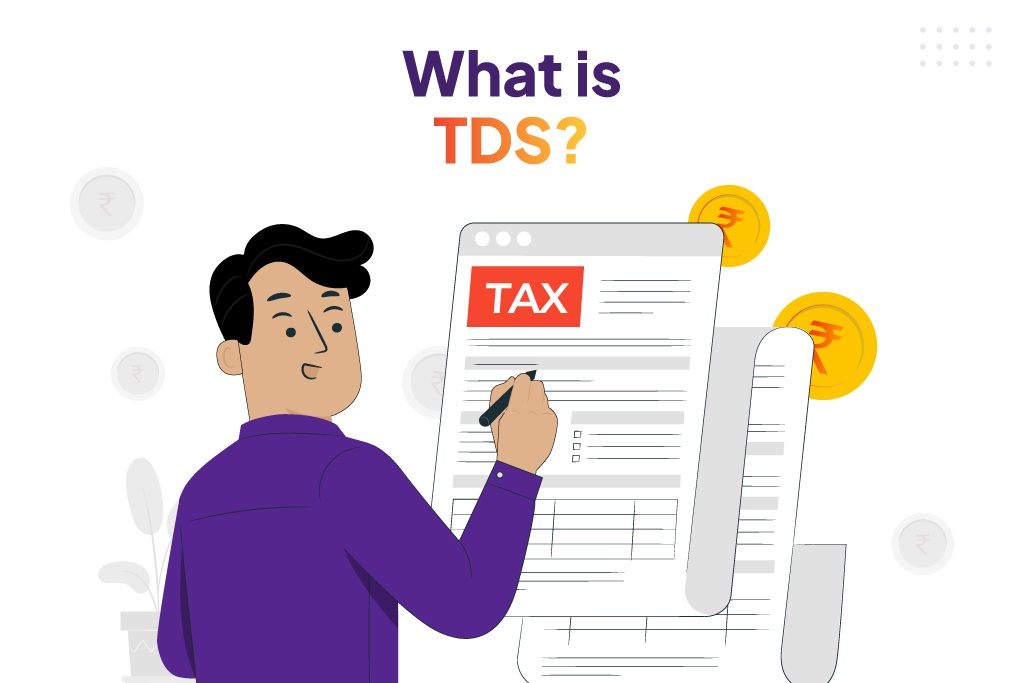TDS, or Tax Deducted at Source, is how the Indian government gets taxes right at the source of earnings. The sender of the money removes a specific amount of tax using this approach before forwarding it to the receiver. TDS guarantees the government’s early receipt of tax money and discourages tax nonpayment via pay, interest, rent, profits, and professional fees. These are only a few of the several kinds of revenue this approach handles.
Everybody, even businesses, should be aware of TDS as it is a necessary component of taxes. This law alters their tax payment amount and financial planning strategy.
Why Is Tax Deduction at Source Important?
TDS is an essential part of tax handling because:
- It makes it easier to collect taxes on time.
- It helps spread the tax bill over the year instead of all at once.
- It makes keeping track of income easier and stops people from not paying their taxes.
How Does TDS Work?
When you pay, TDS is taken out and sent to the government. The person making the payment, or the deductor, must send in the TDS and information about the client. When the person gets their yearly tax return, they can claim a credit for the tax that was taken out.
TDS Example
Allow me to explain TDS using a simple case. Imagine that a business needs to pay an independent graphic artist ₹50,000 for the work they’ve done. If the TDS rate is 10%, the company will take ₹5,000 (10% of ₹50,000) as TDS and give the worker the rest, ₹45,000.
Following the deduction of ₹5,000 as TDS, the company pays the government on the freelancer’s account. When the worker files their taxes, they can take this ₹5,000 off of the total tax amount they owe.
TDS Calculation
When figuring out TDS, the Income Tax Department sets the salary limits and tax rates. There are different TDS rates for different types of income, and there are also wage limits. TDS is only taken out if the income exceeds a certain amount.
One example is that the TDS on wages depends on the person’s tax bracket. On the other hand, the TDS on fixed bank income may be a flat 10%. Here’s a quick look at how to figure out TDS for different types of income:
- Pay: The amount of TDS taken out depends on the employee’s income tax slab rate.
- Interest: Interest from fixed accounts generally has 10% TDS taken off if it’s more than ₹40,000 yearly (₹50,000 for senior citizens).
- Rent: Any rent payments over ₹2.4 lakhs a year are subject to 10% TDS for people and 2% TDS for businesses.
- Fees for professionals: If you pay more than ₹30,000 a year for professional or consulting services, you have to pay 10% in tax.
Types of TDS
Many types of payments are subject to TDS. Here are some of the most popular types:
- TDS on Salary: Employers take out TDS from workers’ pay based on their tax bracket.
- TDS on Interest: Credit unions and banks take TDS out of your interest on things like fixed savings and regular deposits.
- TDS on Rent: Landlords who collect rent that is higher than a certain amount must pay TDS.
- TDS on Professional Fees: People and businesses who pay for professional services must add TDS to their bills.
- TDS on Property: To calculate TDS on the sale of a property, buyers must subtract TDS if the sale price is more than ₹50 lakhs.
Conclusion
Both people and companies need to understand TDS to pay their taxes correctly. Knowing how TDS works can help you better plan your funds and taxes, whether you’re getting paid for services or interest. We help you handle your money well at Maitra Wealth, including ensuring you follow TDS rules. Get in touch with us right away for professional help with your tax and financial plans!










